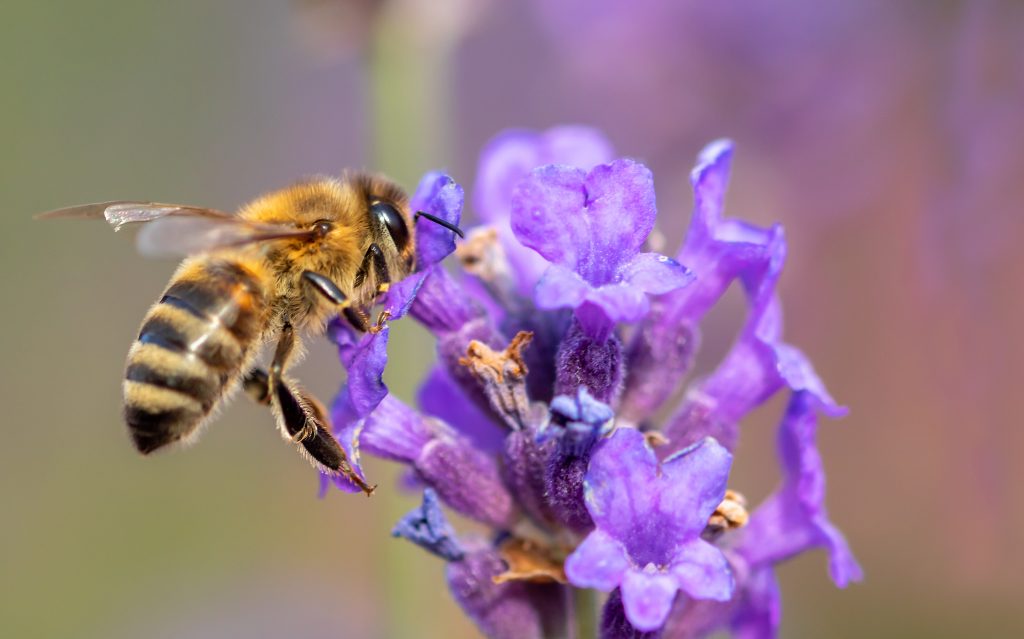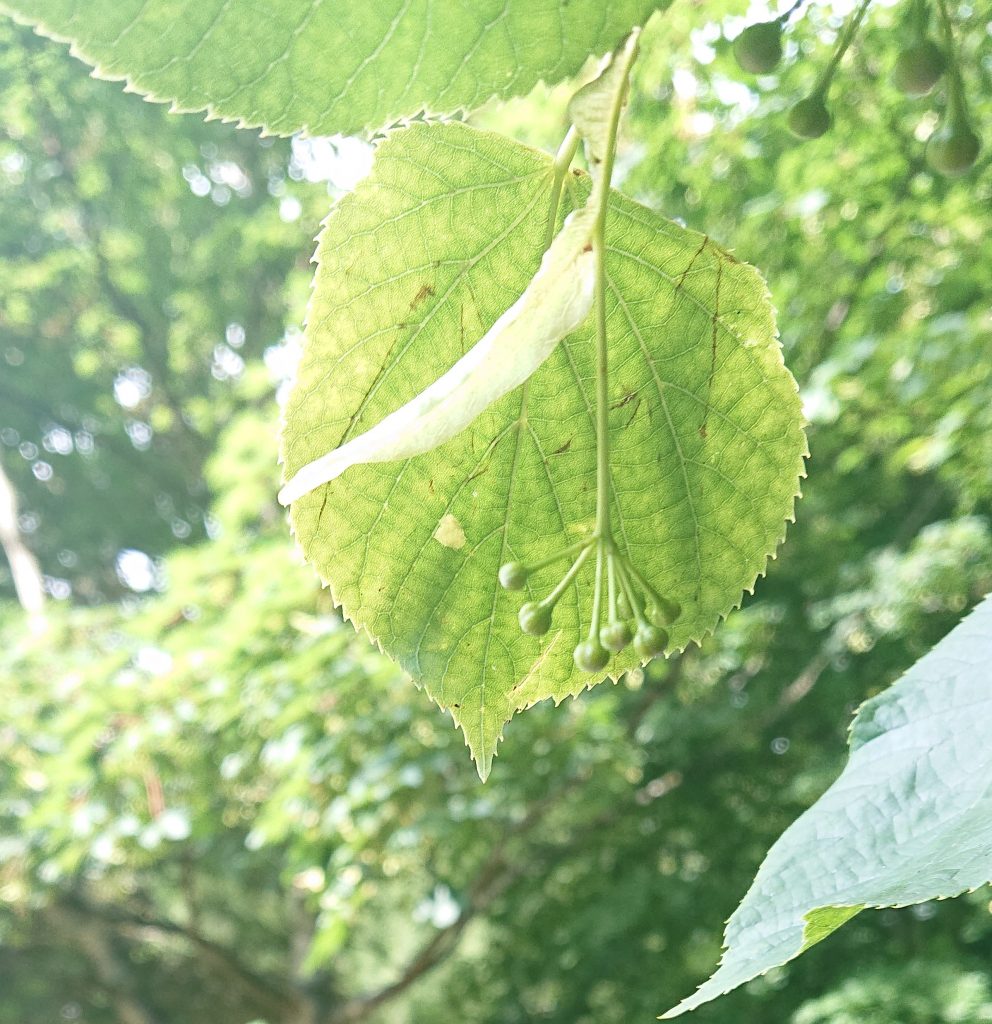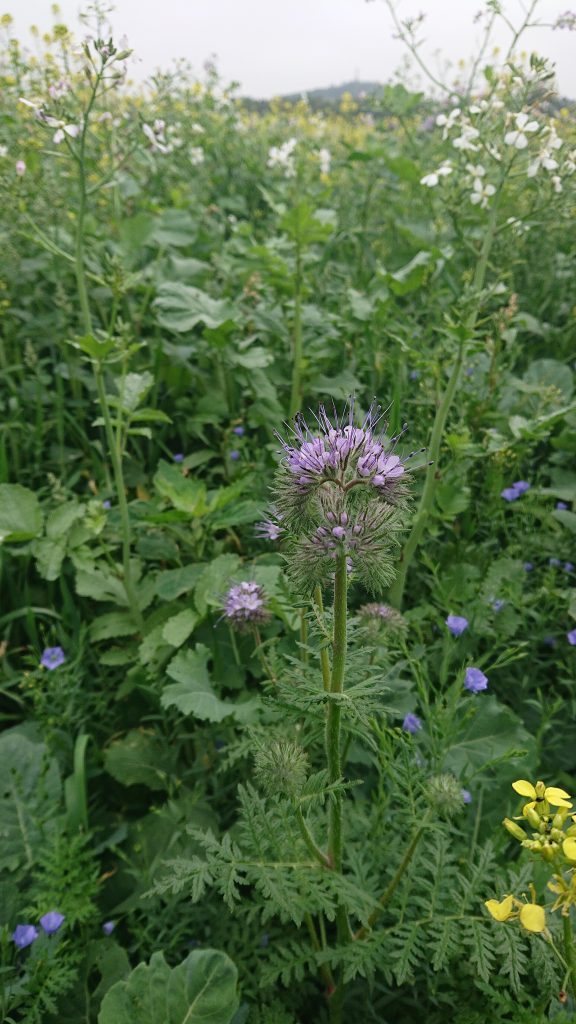Planting for Bees
Planting for bees is becoming increasingly important in an environmentally conscious world.
Discover the best plants for bees, what trees for bees to plant and how field margins can be utilised for Wildflowers for Bees and the use of Borage for Bees.
Best Plants for Bees
We are often asked what plants to grow for bees. The answer to this is huge, there are so many different plants, although the main thing to look for are plants that give copious amounts of nectar and pollen. Different types of bee also prefer different flowers due in part to a differing length of tongue of the bee and being able to access the flowers nectaries.
A good resource to find out what to plant in the garden to attract and help bees can be found on the British Beekeepers Association Website (BBKA)
If you only have a small space to work with, as many do, then we can highly recommend Lavender which flowers for a long period of time and provides for a very wide varieties of pollinators from bumble bees, honey bees, solitary bees and even moths!


Trees for Bees
Trees are hugely beneficial for bees. A single tree can sustain an entire colony of honey bees for the period in which it flowers. Sycamore trees are a great early nectar source and Lime Trees are great for the summer time.
The best lime trees to plant for bees are the small leafed lime also known as Tilia Cordata. The huge benefit to planting trees for bees is that they last a very very long time, and provide season after season. Not to mention the huge abundance of other wildlife that trees support. So if you have space, make sure that Sycamore and the small leafed lime trees play a part in your tree planting.
Lime trees with their heart shaped leafs are commonly planted around churches and stately homes with the trees themselves thought to be symbols of peace and justice. A better tree to plant to bees we could not think of.
Small whips can be purchased very reasonably at tree growers like Trees Please in Northumberland and Ashridge Trees where we have already purchased and planted a number of very healthy lime trees. Our first trees are now only 3 year old and already coming into flower! We hope these trees will be a great part of of Northumberland Honey Co’s lasting legacies. be sure though to ask for Tilia Cordata / Small Leafed Lime, as the broad leafed species can cause bees to become drunk!!
We are not only increasing bee numbers, but tree numbers too!

Borage for Bees
Borage one of the most singularly beneficial flowers for bees. Borage has a long flowering period often filling a usual gap in the supply of nectar for bees in mid summer that beekeepers refer to as the ‘nectar gap’.
Flowering from June through to September the potential for Borage to provide copious amounts of nectar is there, and it is a very easy plant to grow in the garden.
Commercially Grown Borage For Bees
Borage is widely grown to supply oils to the pharmaceutical industry, and is also quite dependent on insect pollination. This is where the benefit of having managed honey bee colonies on fields of borage come in. Not only do the honey bees increase the seed set, but having thorough pollination also increases oil content, for which growers get paid. Having professionally managed bees on borage is of great benefit to growers.
At Northumberland Honey Co as our hive numbers continually grow we are always on the look out for farmers and growers of borage to place hives for. Please contact us to discuss your requirements. We will travel for pollination of borage and can provide references from our current growers. We also pollinate oilseed rape and field beans.

Wildflowers for Bees
If space allows, then planting up annual or perennial wildflowers for bees is a great idea. An increasing number of the growers and farmers we work with are implementing wildflower margins. These margins not only help our bees with nectar and pollen sources but are effectively wildlife corridors for all of nature. A great example of a huge nectar bearer in these margins is Phacelia, also known as ‘the bees friend’ also helps to attract hoverflies which keeps aphids down!
There is increasing research that shows that crop yields generally are increased by the use of wildflower field margins. This benefit also extends to non flowering crops including barley and wheat.
Field margins are often poorer producing areas of the field so it makes complete sense to utilise them to increase crop yields. Research has shown that in the first 1-2 years there is not a huge difference in crop yields, but from the third year wild pollinator numbers double, and this trend continues into the fourth year and beyond.
The implementation of wildflower margins is a cheap investment with the potential for huge paybacks for not only wildlife but also the management and sustainability of crop yields.
It also gives commercial beekeepers like Northumberland Honey Co some vitally importance space to be able to place hives and optimise pollination.
